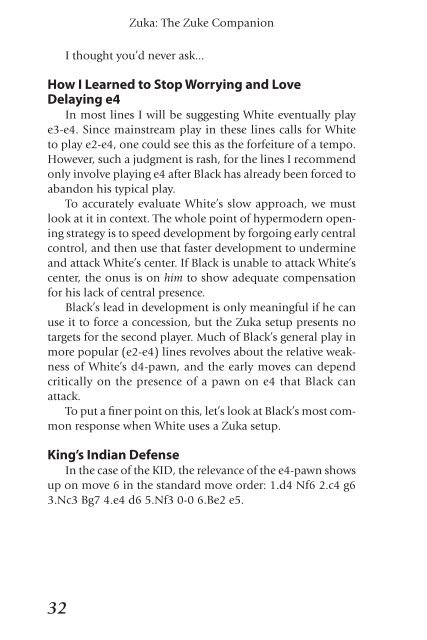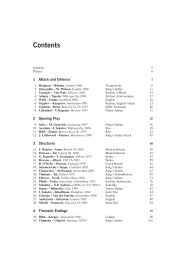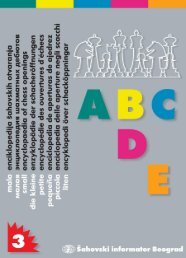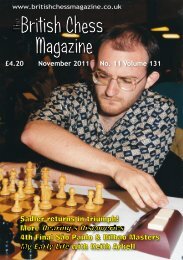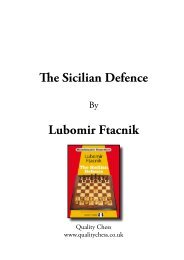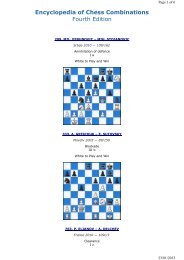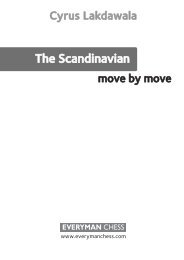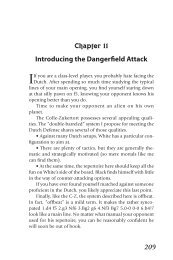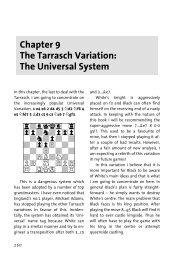The Current Status of Queen's Pawn Game Responses to - Zuka
The Current Status of Queen's Pawn Game Responses to - Zuka
The Current Status of Queen's Pawn Game Responses to - Zuka
Create successful ePaper yourself
Turn your PDF publications into a flip-book with our unique Google optimized e-Paper software.
<strong>Zuka</strong>: <strong>The</strong> Zuke Companion<br />
I thought you’d never ask...<br />
How I Learned <strong>to</strong> S<strong>to</strong>p Worrying and Love<br />
Delaying e4<br />
In most lines I will be suggesting White eventually play<br />
e3-e4. Since mainstream play in these lines calls for White<br />
<strong>to</strong> play e2-e4, one could see this as the forfeiture <strong>of</strong> a tempo.<br />
However, such a judgment is rash, for the lines I recommend<br />
only involve playing e4 after Black has already been forced <strong>to</strong><br />
abandon his typical play.<br />
To accurately evaluate White’s slow approach, we must<br />
look at it in context. <strong>The</strong> whole point <strong>of</strong> hypermodern opening<br />
strategy is <strong>to</strong> speed development by forgoing early central<br />
control, and then use that faster development <strong>to</strong> undermine<br />
and attack White’s center. If Black is unable <strong>to</strong> attack White’s<br />
center, the onus is on him <strong>to</strong> show adequate compensation<br />
for his lack <strong>of</strong> central presence.<br />
Black’s lead in development is only meaningful if he can<br />
use it <strong>to</strong> force a concession, but the <strong>Zuka</strong> setup presents no<br />
targets for the second player. Much <strong>of</strong> Black’s general play in<br />
more popular (e2-e4) lines revolves about the relative weakness<br />
<strong>of</strong> White’s d4‐pawn, and the early moves can depend<br />
critically on the presence <strong>of</strong> a pawn on e4 that Black can<br />
attack.<br />
To put a finer point on this, let’s look at Black’s most common<br />
response when White uses a <strong>Zuka</strong> setup.<br />
King’s Indian Defense<br />
In the case <strong>of</strong> the KID, the relevance <strong>of</strong> the e4-pawn shows<br />
up on move 6 in the standard move order: 1.d4 Nf6 2.c4 g6<br />
3.Nc3 Bg7 4.e4 d6 5.Nf3 0-0 6.Be2 e5.<br />
32


